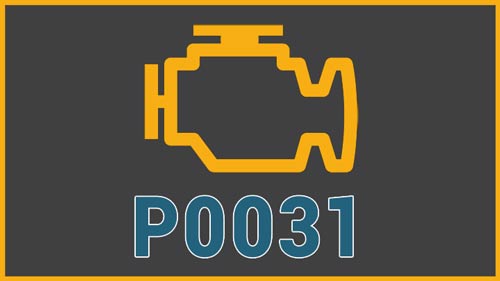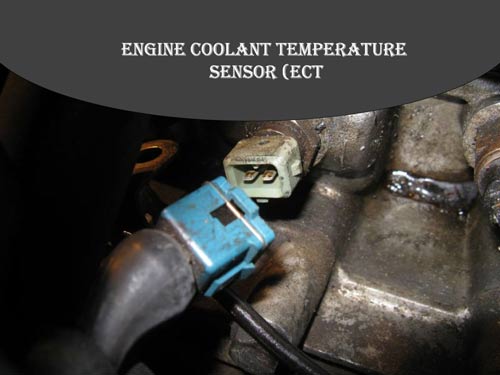Even the most well-maintained bikes can experience hiccups along the way. And one of the most frustrating is the dreaded P0031 error code in Harley-Davidson.
So what does Harley Code P0031 mean? The error code indicates a malfunction with the heated oxygen sensor. A faulty oxygen sensor, a wiring issue, or a problem with the engine control module could cause this issue. Symptoms may include poor fuel economy, rough idling, and decreased engine performance.
Reading this article will give you a comprehensive understanding of this troubleshooting code. This will enable you to take the necessary steps to resolve the issue and keep your Harley running smoothly.
Understanding Harley P0031 Error Code
The Harley code relates to the oxygen sensor. This sensor is located before the catalytic converter. And its primary function is to measure the oxygen content in the exhaust gases. The oxygen sensor must reach a specific operating temperature to function effectively.

This is why it is equipped with a heating element. The heating element allows the sensor to reach operating temperature more quickly.
When the P0031 code is triggered, the heating element in the oxygen sensor is not functioning correctly. This results in low voltage readings from the sensor, which can cause a range of issues to your engine. This error may be accompanied by others such as the Harley code POO51.
Sign Of the Harley P0031 Code
Here are the symptoms accompanying this error code:
1. Check Engine Light is On
When the Check Engine Light (CEL) comes on in your Harley, it’s a warning that there is a potential issue with the engine or its components. It is not only designed to catch Harley Davidson 103 engine problems, but also those of other models before it’s late.
2. Poor Fuel Economy
When the heating element is not functioning correctly, the heated oxygen sensor (HO2S) may take longer to reach its operating temperature. And the Engine Control Module (ECM) may be unable to adjust the air/fuel mixture. This will lead to poor fuel economy.
3. Rough Idling
The engine will produce a rough, uneven sound. It will feel like it is shaking or vibrating more than usual. This is because you have a fluctuating air/fuel mixture. As a result, the engine may struggle to maintain a consistent idle.
4. Decreased Engine Performance
You will have a decrease in acceleration, where the engine feels like it is struggling to pick up speed. The engine may also stall or hesitate when trying to accelerate, and there may be a reduction in power overall.
Additionally, the vehicle may have difficulty climbing hills or maintaining speed on the highway. Thus, the engine will feel unstable, making maintaining a smooth driving experience challenging.
5. Failed Emissions Test
Inaccurate readings to the ECM will result in the vehicle producing excessive emissions, leading to a failed emissions test. And the vehicle will not be within the acceptable emissions limits set by the regulatory authorities.
Causes of Harley code P0031
The P0031 error code is caused by the following:
1. Malfunctioning ECM
The ECM is responsible for interpreting data from various sensors in the vehicle. This includes the HO2S located in the exhaust system.
So, when it malfunctions, it may not receive the signal. It may also not interpret the correct data from the HO2S, causing the P0031 code to be triggered.
2. Faulty Heating Element
The heated oxygen sensor has a heating element to help it reach operating temperature quickly. If the heating element is faulty, the HO2S takes longer to reach operating temperature.
In worse cases, it may not reach that temperature at all. This can cause the ECM to receive incorrect or no data from the HO2S.
3. Malfunctioning ECT Sensor
The engine coolant temperature sensor (ECT) is responsible for measuring the temperature of the engine coolant. But a malfunctioning ECT sensor cannot send incorrect temperature data to the ECM.

This makes it change performance inappropriately, causing the engine to run hotter or colder than optimal. It can also affect the temperature of the HO2S. And when its temperature is incorrect, it will trigger the P0031 code.
4. Failed Engine Thermostat
The engine thermostat is responsible for regulating the engine coolant temperature. If the thermostat fails, it can cause the engine to run at a temperature that is too low or too high, leading to the same error code.
5. Defective Relay
The O2 sensor relay is an electrical component that sends power to the HO2S heating element when the engine is running. It ensures that the HO2S heating element receives the correct voltage to reach operating temperature quickly.
With a failed relay, the heating element will receive low or no voltage. This will prevent it from heating up properly. Hence, the ECM will not receive the correct signal, triggering the error code.
6. Blown Fuse
There is a specific fuse that is responsible for protecting the heating element circuit. If this fuse blows, it creates a gap in the circuit, which stops the current flow to the heating element. Thus, the ECM receives inaccurate data from the HO2S, and it triggers the error code.
7. Issues with Wiring and Connectors
When there is damage to the wiring or corrosion in the connectors, it can cause issues with the flow of electricity to the HO2S heating element.
This can cause circuit resistance, leading to a drop in voltage supplied to the heating element. And the ECM will detect this issue and trigger the P0031 code.
Step-by-step Guide on How To Diagnose and Repair Code P0031
Follow the steps below to the latter:
Step 1: Gather Your Tools and Safety Equipment
To get started on diagnosing and repairing code P0031, it’s essential to have the right tools and safety equipment on hand. For this job, you will need
- A digital multimeter
- A scan tool
- A socket set
- A wire brush
- Safety glasses
Step 2: Check the Fuse
- Locate the fuse box and find the fuse for the oxygen sensor heater circuit.
- Use the multimeter to test the fuse.
- If the fuse is blown, replace it with a new one of the same amperage.
Step 3: Inspect the Wiring and Connectors
- If the fuse is not the issue, inspect the wiring and connectors.
- Look for any signs of damage, such as frayed wires or corroded connectors.
- Use the wire brush to clean any corrosion off the connectors.
Step 4: Test the Heater Element
- Next, test the oxygen sensor’s heater element.
- Disconnect the sensor and use the multimeter to test the resistance of the heater element.
- Replace the oxygen sensor if the resistance is out of the specified range.
Step 5: Check the ECT Sensor
- If the issue is still not fixed, check the ECT sensor.
- Use the scan tool to check the ECT sensor’s reading. If the reading is incorrect, replace the sensor.
Step 6: Inspect the Engine Thermostat
If the replacement did not fix anything or you found the ECT readings correct, inspect your engine thermostat. Check that it is opening and closing correctly. If it’s not, replace the thermostat.
Step 7: Check the Relay
- You will need to check if the problem has not been fixed by now.
- Use the multimeter to check that the relay receives power and functions correctly.
- Use a continuity test to check all the connections.
- If you detect problems, replace the relay.
Step 8: Inspect the ECM
The last thing you should look at is the ECM. Use the scan tool to check for any error code P0601. The module should be replaced if the code is displayed on the scanning tool.
Watch this video on how to diagnose your ECU
Step 9: Clear Error Codes and Re-scan
- After completing repairs, clear the error codes and re-scan the vehicle to ensure the P0031 code is no longer present.
- If the code is still present, re-check all repairs to ensure they were done correctly. We also recommend a rationality test to ensure all the sensors work perfectly.
FAQs
Here are answers to questions that might arise in the process:
Q: CAN I PREVENT CODE P0031 FROM OCCURRING IN THE FUTURE?
Yes. Keep up with routine maintenance on your vehicle. Regularly check and replace any damaged or worn-out parts, such as oxygen sensors, engine thermostats, and fuses.
Additionally, avoid using low-quality or incompatible parts. They can cause issues and malfunctions in your vehicle’s systems.
Q: CAN CODE P0031 CAUSE DAMAGE TO MY ENGINE?
No. But it can lead to decreased engine performance and reduced fuel efficiency. If left unresolved, it can also cause your vehicle to fail emissions tests. This will lead to fines or penalties.
Q: CAN I REPLACE THE OXYGEN SENSOR MYSELF?
Yes, it is possible to replace the oxygen sensor yourself. However, it can be difficult and time-consuming, especially if you are unfamiliar with automotive repair.
In addition, some oxygen sensors may be difficult to access. This makes the job even more challenging. For this reason, we recommend having it replaced by a mechanic.
Conclusion
Diagnosing and repairing the Harley P0031 code can be a daunting task. But with the right tools and knowledge, it is possible to fix the problem. You should be aware that other codes may be present alongside P0031.
Hence, perform a thorough diagnosis to avoid misdiagnosis and unnecessary repairs. If you can’t do so, take professional help. By taking the time to properly diagnose and fix the issue, you can keep your vehicle running efficiently for years.
Additionally, you can get all the Harley code issues here .